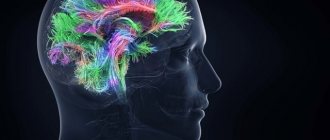What is increased anxiety?
Increased anxiety is a person’s high sensitivity to anxiety and stressful life situations. The condition is more often registered in children of preschool and high school age, as well as in women with psycho-emotional instability, concomitant neurological diseases, and mental childhood trauma.
A slight increase in a person’s stress level is considered as an individual personality trait, as a feature. If stress becomes intrusive and worsens the quality of life of the patient or others, then they speak of mental pathology. The prevalence of the disease among other affective disorders is 33%, 25% occurs in childhood.
Survey
A persistent feeling of anxiety may be a symptom of physical or mental illness. Diagnosis of this condition is carried out by psychiatrists, psychotherapists, and psychologists. When a patient contacts specialists, a clinical interview is initially carried out, during which the duration of the emotional disorder, the frequency and severity of anxiety states, and possible causes are clarified. In addition to the conversation, the following diagnostic methods are informative:
- Observation.
Patients are characterized by restlessness, emotional instability, and absent-mindedness. It can be difficult for them to distract themselves from their own experiences and concentrate on the doctor’s words. During the consultation, they often change their body position for no reason and move their hands through objects (clothing fasteners, telephone, bag). Obsessive actions designed to reduce tension are possible. - Psychodiagnostic questionnaires.
To determine the level of anxiety, special psychological tests are used: Taylor's Explicit Anxiety Scale, Spielberger's Anxiety Scale, Kondash's Social-Situational Fear Scale. The results make it possible to quantify how severe the feeling of anxiety, worry, and fear is. - Projective tests
. To identify a hidden or denied emotional state by the patient, projective research methods are used: drawing tests, tests of interpretation of unstructured drawing material. Examples of such techniques are drawing of a person, Rorschach test, TAT. Based on the results, it is possible to determine the presence of anxiety and suggest its origin.
If restless thoughts and experiences exist without a reason, the patient is referred for consultation to a neurologist or endocrinologist. Subspecialists determine the presence or absence of endocrine and neurological diseases as a factor in the development of emotional disorders. A survey is carried out to clarify somatic complaints (pain, malaise), examination, laboratory blood tests for hormone levels, instrumental studies of the brain and the vessels that feed it.
Causes and risk factors
Anxiety disorder in a person is a tendency to excessive feelings of fear, anxiety, a sense of danger, accompanied by an obsessive anticipation of a threat, up to the development of panic attacks. If the anxiety is justified, the person will always tell its cause, but with pathology, the root cause is never determined. The most common causes of anxiety are:
- features and disorders of the nervous system of any origin, form;
- characteristics of the environment, family;
- increased psycho-emotional stress, stress factor;
- previously suffered stress and shock associated with a threat to life (the person could have witnessed the tragedy, he became aware of the incident);
- severe diseases of internal organs associated with persistent disturbance of water and electrolyte balance, brain hypoxia;
- somatic diseases;
- hormonal disbalance;
- alcoholism;
- melancholic personality type;
- very severe brain injuries, meningeal infections.
The main role occurs in early childhood. Anxiety may develop much later, decades later. The condition develops in an unfavorable environment for the child’s development and unstable relationships with parents. Some medications for the treatment of diabetes, certain thyroid diseases, and mental disorders (as a side effect) can trigger the pathological process.
How to overcome anxiety on your own: advice from a Moscow psychologist
All people worry about something: it’s normal to worry about a crisis, coronavirus, a change of job or place of residence. But when our anxiety accumulates and turns into a restless snowball, interfering with normal life, then it is worth stopping and understanding what is happening. Family psychologist Lyudmila Tkachenko talks about what anxiety is, how to cope with it and who to turn to for help.
Anxiety in character
“Anxiety is a psychological feature of a person, which is caused by worry or a premonition of something bad,” says Lyudmila Tkachenko .
As a rule, psychologists distinguish two types of anxiety states:
- Temporary, situational anxiety. Anxiety comes and goes without leaving its mark on a person’s daily life.
- Anxiety as a character trait. In this case, the person is constantly in a tense state and reacts sharply to everything that happens in his life. The feeling of anxiety gradually develops into a disorder that interferes with life: a person may be afraid to leave the house or stop doing what he likes.
Where does anxiety come from?
The causes of situational anxiety usually lie in specific events that cause anxiety. For example, dismissal from work, change of place of residence, family problems.
The causes of constant anxiety can be physical: hormonal changes, stress, depression, and other mental disorders.
Sometimes anxiety “comes from childhood”: if the child has witnessed parents’ anxiety with or without reason. For example, adults could be very worried about little things, escalate, make a mountain out of a mountain - and the child recorded this pattern of behavior.
“An unfavorable environment in the family, among friends and peers can also trigger the development of anxiety. Children become excessively whiny, have problems sleeping, find it difficult to establish new social connections, and begin to study worse,” notes the psychologist .
Anxiety manifests itself in different ways:
- the feeling of anxiety is mixed with irritation, concentration decreases, heart rate increases, a “lump” appears in the throat;
- Some people experience increased sweating, nausea or itchy skin;
- At first there is a feeling of slight discomfort, which soon develops into real panic.
FOUR SIMPLE STEPS TO VICTORY
If you feel your anxiety getting worse, try a few simple steps.
Focus on your breathing . Take a deep breath and exhale. Then inhale through your nose, counting to 4, and hold your breath, continuing to count to 7. On the count of 8, exhale slowly. Repeat the exercise several times.
Play soothing music. The music can be anything: classical, for meditation, sounds of nature - the main thing is to make you feel calmer.
Start doing something with your hands. Clear your desk, draw, start knitting a scarf, wash the dishes... Focus on any active activity, don't sit.
Take a break from what's bothering you. If you start to feel anxious from watching the news, turn off the TV, turn on a nice movie or video, and read. You need to occupy your head with something else.
“These steps will help you quickly calm down in a specific situation, but you should understand that they will not get rid of the problem completely - you need to reconsider your lifestyle,” emphasizes Lyudmila . - “Give up coffee, energy drinks, adjust your sleep schedule, “filter” your environment, movies, music, watching the news, start playing sports.”
How to recognize an anxiety disorder
“When the state of anxiety lasts more than 6 months and is accompanied by physical symptoms, then we can talk about an anxiety disorder that will not go away on its own. In this case, the help of a psychologist or psychotherapist is required,” the specialist notes.
There are several types of anxiety disorder, and each has a different set of typical manifestations:
- Social phobia. A person avoids contact with other people and reacts sharply to how others treat him.
- Generalized anxiety disorder. This is a constant and acute feeling of anxiety and worry about minor reasons - for example, if a loved one is late at work. As a rule, anxiety is accompanied by physical symptoms: heart pain, “cold sweat,” trembling.
- Anxiety related to health status. This disorder can occur in people with chronic diseases. For example, asthma sufferers often fear choking or losing their inhaler.
- Various phobias. This may include the fear of flying, the fear of closed spaces that limit a person’s movement.
- Panic attacks. They are most often accompanied by rapid heartbeat, shortness of breath, and dizziness.
“All these symptoms require contacting a specialist, and under no circumstances should this be postponed until later,” says Lyudmila . “Anxiety can lead to sleep disturbances, loss of social connections, digestive disorders and heart disease.”
On a note
If anxiety does not go away, it is best to make an appointment with a psychologist or psychotherapist. They will help you understand the causes of your anxiety and get out of the crisis.
To get free psychological help, use the “Social Navigator” - a map of all city institutions that provide social services to Muscovites. Go to the “Psychological Assistance” section, select a suitable organization and make an appointment with a specialist.
If you need psychological help right now, then call 24-hour number 051 - emergency psychological assistance specialists will listen, give a free consultation and tell you what to do. For calls from a mobile phone, dial +7 (495) 051.
Source
Press service of the Department of Labor and Social Protection of the Population of Moscow
Classification
The classification allows you to determine the nature of the disease, phobia, and patient management tactics. If childhood anxiety is more influenced by age-related chronologies, then in adults it is important to take into account the sphere of occurrence, the degree of impact on the psyche, severity, forms:
- By impact . Clinicians distinguish between mobilizing and relaxing anxiety. In the first case, the human body becomes excited and prepares for danger; in the second, the will is paralyzed and the person is unable to adequately assess the degree of danger.
- Sphere of emergence . Increased anxiety occurs depending on the environment. There are educational, social, interpersonal anxiety, and the problem of choice. Pathology often becomes the cause of low self-esteem and inadequate demands on others. The usual problem of choice in any place of stay can cause stress; there is no ability to control emotions.
- By expression . There is reduced anxiety (a person underestimates even a real potential threat), optimal (a person’s anxiety is accompanied by the mobilization of the body’s resources to resist danger), increased (excitability and fear arise for no reason, provoke panic, and in the event of a real danger, hysterics develop, paralyzing fear).
The condition requires special attention, since both conditions pose a threat not only to a person’s psycho-emotional health, but also to his life, if the danger to life is real.
Prognosis for depressive disorders
If the patient continues the course of treatment properly and follows all the specialists’ instructions, the prognosis is very favorable. It is important to note that in 50% of cases, patients show independence and stop taking medications, without fully curing depression. As a result, a relapse occurs, which worsens the patient's condition.
It is extremely important to stop the disease after the first manifestation, otherwise the likelihood of reoccurrence increases. After repeated onset of depression, a third attack occurs in 75% of cases.
What diseases can be hidden behind?
Diagnosis of the condition in children and adults is the field of activity of psychoneurologists, clinical psychologists, and psychiatrists. The final diagnosis is made on the basis of a physical examination, interview, tests, assessment of the anxiety scale, study of life and clinical history.
An increase in the level of stress and anxiety should be differentiated from depressive states, maladjustment reactions, the initial stages of schizophrenia, as well as from other psychiatric diseases caused by the development of phobias, obsessive thoughts and conditions.
Differential diagnosis of anxiety conditions
As such, anxiety cannot be considered a separate disease or a sufficient diagnostic indicator for full and adequate treatment.
In the modern syndromic classification of diseases, anxiety is defined as a syndrome and is highlighted in section F4 - where syndromes related to neurotic, stress-related and somatoform disorders are indicated.
Syndromes, which are determined by alarming symptoms and have a leading role in the patient’s complaints, are included in the context of some underlying, often well hidden from a superficial glance, disease process. However, anxiety states themselves are not a complete diagnosis on the basis of which it is possible to determine the methods of proposed treatment and cannot become a determining factor for making predictions.
Types of anxiety
- acute anxiety - panic states, when anxiety attacks occur periodically, for a relatively short time;
- chronic anxiety - with them, anxiety is not so acute, it is present almost constantly, often with manifestations of obsessive thoughts.
Anxiety-paranoid syndrome is a combination of the affect of anxiety, accompanied by agitation and confusion, with delusional ideas of relationships or persecution, verbal illusions and hallucinations. It most often manifests itself in schizophrenia and organic psychoses.
How and why do signs of anxiety appear?
Anxiety is a normal state that triggers a self-preservation mechanism. Clinicians highlight not only psychological disturbances during stress, but also real physical sensations. Psychological symptoms of increased anxiety:
- frequent worries, premonitions, insecurity;
- sleep disturbance, decreased activity;
- unreasonable fear for loved ones, feelings of fear, mental heaviness;
- fear of a new environment;
- difficulty communicating with others;
- decreased performance, impaired concentration of thoughts - the entire field of thoughts is occupied by anxiety (patients constantly experience stress, are afraid to do unnecessary actions);
- inadequate self-criticism, tearfulness.
Other changes occur before arousal occurs. Physically, the disease is manifested by sweating, redness of the face and neck, increased breathing, pulse, heartbeat, a lump in the throat, bloating and loose stools. Outwardly, the person looks tense, nervous, clenches his fists, fiddles with buttons, clothes, his own fingers, and bites his nails.
Cure prognosis
TDR of physiological etiology is easily eliminated during the treatment of the underlying disease, with the exception of irreversible forms of brain damage. The difficulty is in the treatment of anxious depression caused by personal and psychological factors. In this case, early intervention and the assistance of the patient’s immediate environment play a decisive role.
Carrying out a full course of complex therapy helps to remove anxiety and normalize the general emotional mood, but to ensure the absence of relapses, patients are recommended to work on developing stress resistance so that an unexpected “blow of fate” does not provoke a new attack of anxiety and depression.
Share this article
What happens if you don't get treatment...
An increased level of anxiety without adequate treatment leads to serious mental disorders in the future, especially in patients at special risk. In children, over a long period of time, obsessive-compulsive neurosis, numerous phobias, and psychasthenic accentuation of character are formed.
Adolescents change behavioral responses. The disorder in adults disrupts the normal rhythm of life, obsessive states make adequate socialization difficult, and suicidal thoughts may appear. In the absence of treatment, patients lock themselves at home, deprive themselves of communication, plunge into deep depression, and sometimes become alcoholics.
The results of treatment, if medical recommendations are followed, are stable and last a long time. It is dangerous to leave symptoms unattended to avoid serious complications. The site contains many comments and answers to requests from patients with similar symptoms, and reviews of treatment. Articles will help you obtain information about the condition, but consultation with a specialist is also required. If the patient can cope with negative emotions and begins to control thoughts, then the degree of arousal will decrease significantly.
Anxiety disorder is a serious psychiatric illness that requires mandatory correction. Prevention consists of timely diagnosis, accurate diagnosis, adequate medication or psychotherapy, and early consultation with a doctor. Complications of a pathological condition always complicate treatment and are often irreversible.
Modern methods of treatment
To treat an anxiety disorder, you will need several psychotherapeutic sessions that will allow you to establish the exact cause of this condition, as well as determine the necessary medications. Antidepressants and various anti-anxiety medications are usually prescribed.
In case of excitement of the nervous system, doctors prescribe Afobazole.
Unlike many other disorders and mental illnesses, anxiety disorder is quite manageable. If the diagnosis is confirmed, then you should definitely take the prescribed medications. This will make life much easier for yourself and those around you. With the right medications and following the course of treatment, there will be no dependence on medications.










